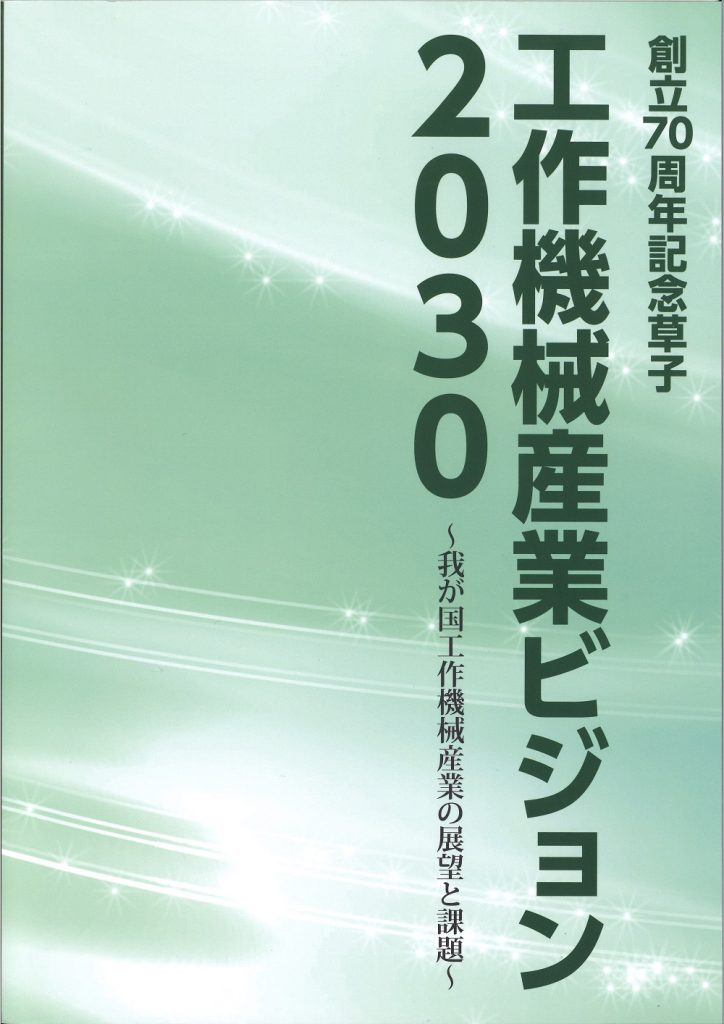
- News
- Basics
- Products
- JP Job shop
- Exhibition
- Interview
- Statistic
- PR
- Download
- Special contents
News
August 9, 2022

In May of this year, Japan Machine Tool Builders’ Association (JMTBA) compiled its “Machine Tool Industry Vision 2030” looking ahead to the year 2030 as part of the JMTBA’s 70th anniversary. The vision outlines a wide range of future prospects for Japan’s machine tool industry, including the forecast that by 2030, the amount of orders for machine tools in Japan will reach 2.475 trillion yen, up 60.6% from the 2021 level.
The Vision 2030 was compiled by the ” Machine Tool Industry Vision 2030 Study Council,” chaired by Dr. Masaomi Tsutsumi, professor emeritus of Tokyo University of Agriculture and Technology. Chairman Tsutsumi stated, “I am confident that the contents of the vision look ahead to the next 10 years and beyond.”
In 2012, JMTBA compiled its Vision 2020, which outlines the goals that the Japanese machine tool industry is expected to achieve by the year 2020. With this as a guideline, JMTBA had been working on following four key issues in the 2010s: (1) Stronger collaboration among industry, academia, and government, (2) Reinforcement of standardization strategies, (3) Increase the centripetal force of the Japan International Machine Tool Fair (JIMTOF), and (4) Strengthen human resource recruitment and publicity measures.
The guidelines outlined in Vision 2020 are universal, but 10 years have passed since its compilation, and the social environment surrounding the industry has changed dramatically. In response to the new challenges the industry faces, JMTBA has reviewed the direction the Japanese machine tool industry should take, and has developed a strategy to complement Vision 2020.
Major changes in the social environment include the digitalization, social needs such as carbon neutrality and SDGs, the electrification of automobiles, and the COVID-19 pandemic. Environmental responsiveness, for example, can be positioned as a new value-added incentive for capital investment or new technology development. Thus, responding to changes in the social environment while leading to changes in the industrial structure.
Assuming that orders will grow steadily in response to major changes in society and the market, the mid- to long-term outlook for the amount of orders in the Japanese machine tool industry is expected to reach 2.475 trillion yen by 2030. The breakdown is 874 billion yen for domestic demand and 1.581 trillion yen for foreign demand. The average annual growth rate over the next nine years will be 5.3%, and the industry will break the 2 trillion yen mark in 2026.
JMTBA recognizes that the Japanese machine tool industry is not a mature industry, but one that will continue to grow sustainably in the future.
The Vision 2030 consists of seven aspects: 1) Trends in machine tool supply / demand and major user industries, 2) Management of Japanese machine tool industry, 3) Trends in machine tool manufacturing, 4) Transformation of business models, 5) Issues and future prospects of JIMTOF, 6) Export management of machine tools, and 7) Recruitment and development of human resources for manufacturing.
The general introduction to the Vision 2030 summarizes the most immediate issues that the industry needs to work on, such as the Chinese trend toward domestic production and its strategy, climate change issues, and export control related to machine tools.
Each section is worth reading, packed with very detailed and thoughtful content, and the total number of pages is nearly 400. For example, in “Trends in machine tool manufacturing,” the future of machine tools is presented by young engineers, which is not only informative but also enjoyable, and provides hope for a brighter future for the industry.
Dr. Inaba, Chairman of JMTBA, stated, “I hope that the suggestions discussed in this vision contribute to the development of management strategies of each company”. Vision 2030 provides a guideline on which the Japanese machine tool industry should base its operations for the next 10 years.
Staff Editor: Takashi Haga
May 2, 2022
July 22, 2022
June 22, 2022